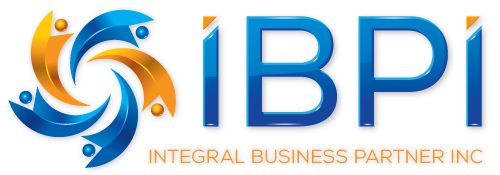Introduction: The Shift from Transactions to Relationships
Recruiting isn’t just about filling roles—it’s about guiding candidates and clients toward the right opportunities and solutions. Yet, many recruiters fall into a transactional mindset, treating the process as a numbers game rather than a relationship-building endeavor.
The best recruiters take a consultative approach—one that prioritizes long-term success over short-term placements. In a world where AI can automate sourcing and initial screenings, recruiters who master the human element of hiring will stand out. This post explores why transitioning from transactional to consultative recruiting is essential and how AI can enhance, rather than replace, this shift.
AI vs. Humans: What Can Be Automated, What Cannot
AI excels at high-volume, repetitive tasks, including:
- Sourcing candidates using algorithms to scan databases faster than any human.
- Initial resume screening to filter out unqualified applicants.
- Automating interview scheduling and follow-up reminders.
- Providing data-driven market insights to help with salary benchmarks.
- AI-based assessment tools (e.g., Pymetrics, HireVue) to evaluate technical skills, personality traits, and cultural fit at scale.
However, AI cannot build trust, understand emotions, or form genuine relationships—things that top recruiters do best.
A transactional recruiter, whose main focus is just pushing candidates through a pipeline, can be replaced by AI. But a recruiter who builds relationships, offers strategic hiring advice, and understands candidates beyond their resumes brings irreplaceable value to the hiring process.
What Does a Consultative Recruiter Look Like?
A transactional recruiter focuses on:
- High-volume candidate submissions.
- Filling open roles as quickly as possible.
- Minimal engagement with candidates after placement.
- Generic messaging and one-size-fits-all approaches.
A consultative recruiter prioritizes:
- Candidate-first strategies, ensuring the best match.
- Building trust and long-term relationships with candidates and clients.
- Understanding market trends to provide strategic hiring advice.
- Tailoring communication to each candidate and client’s unique needs.
Why This Shift Matters
Clients and candidates can find job openings or applicants on their own. What they can’t get from an algorithm is trust, insight, and strategic guidance—this is where consultative recruiters excel.
A consultative recruiter:
✔️ Gains repeat business from both candidates and clients.
✔️ Builds a reputation as a trusted hiring expert.
✔️ Is less likely to be replaced by automation because they provide value beyond matching resumes to job descriptions.How AI Can Enhance Consultative Recruiting
AI and automation shouldn’t replace human recruiters, but they can act as force multipliers in the following ways:
- AI-powered sourcing tools (e.g., LinkedIn Recruiter, HireEZ) can identify passive candidates, allowing recruiters to focus on relationship-building instead of manual searches.
- AI-driven chatbots (e.g., Paradox, Olivia) can handle initial candidate engagement, freeing recruiters to focus on deeper discussions.
- Predictive analytics can forecast hiring trends and salary benchmarks, allowing recruiters to offer data-backed consultation to clients.
- AI scheduling tools (e.g., Calendly, Clara) streamline interview coordination, reducing administrative workload and leaving more time for personal connections.
- AI-based assessment tools can evaluate technical skills, personality traits, and cultural fit efficiently, allowing recruiters to make more informed decisions before engaging in personal interviews.
A smart recruiter leverages AI to enhance efficiency but ensures that all critical interactions remain personal and meaningful.
Consultative Doesn’t Mean Slower—It Means Smarter
One common misconception is that being consultative means slowing down the recruitment process. In reality, consultative recruiters are often faster and more effective because they focus on quality over quantity while leveraging AI-driven tools for efficiency.
- Instead of blindly pushing resumes, consultative recruiters target the right fit from the start, reducing time-to-hire.
- By understanding candidate motivations early, they prevent drop-offs and counteroffers, saving valuable time in renegotiations.
- AI-enhanced assessments and chatbots allow recruiters to quickly filter and pre-qualify talent, so human interaction is focused on closing and advising rather than just screening.
A consultative approach doesn’t mean spending extra time—it means using time wisely to make better placements faster while strengthening relationships.
Actionable Steps to Become a Consultative Recruiter
- Prioritize candidate relationships – Follow up with candidates post-placement via a quarterly check-in to build long-term loyalty.
- Educate your clients – Provide market insights, salary data, and hiring best practices instead of just sending resumes.
- Use AI for efficiency, not replacement – Automate resume parsing and leverage AI-based assessments to gain deeper insights, but personally evaluate top candidates to assess soft skills and culture fit.
- Develop industry expertise – Subscribe to niche recruitment reports and attend industry webinars to position yourself as a thought leader.
- Ask deeper questions – Instead of “Are you interested in this job?” ask questions that uncover motivation, aspirations, and values, such as:
- What kind of difference do you want to make in your next role?
- What challenges excite you the most in your work?
- Beyond salary, what factors influence your job satisfaction?
- Where do you see yourself growing in the next five years?
- How do you want to be recognized for your contributions?
Final Thoughts
The future of recruiting belongs to those who go beyond the transaction and become strategic advisors. Recruiters who embrace consultative thinking, invest in relationships, and leverage AI as a tool (not a replacement) will thrive.
By shifting from transactional to consultative recruiting, you not only future-proof your career but also build a stronger, more sustainable practice.
Are you ready to make the shift? Start by applying one consultative strategy today and see the difference it makes!

